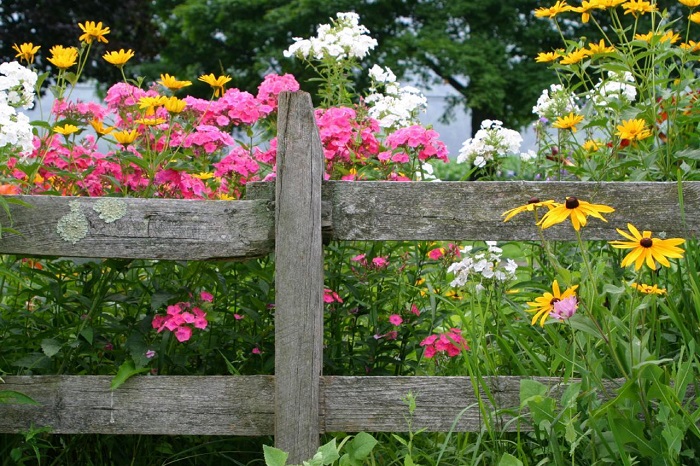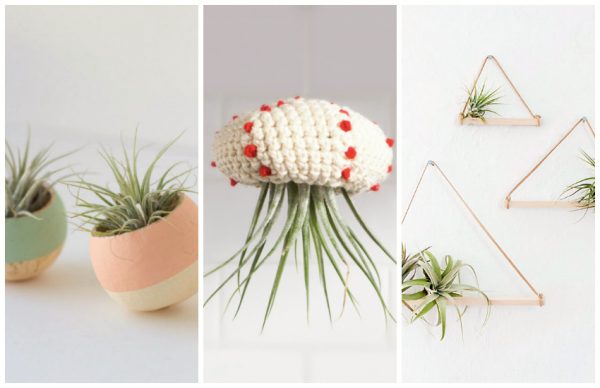Growing Flowering Plants in Your Backyard
Posted by Editor in Gardening on Jul 17th, 2019 | Comments Off on Growing Flowering Plants in Your BackyardGrowing flowering plants in a small apartment in Singapore can be a challenge especially if you don’t have a lot of experience with gardening. But it is possible, and the rewards are worth the effort.
Here are tips to maintaining a small but beautiful backyard garden of flowering plants.

- If you are going to use pots, make sure that there is a hole at the bottom for sufficient drainage.
- Do not use just about any soil you can find in your surroundings. Buy a gardening soil from supply shops to avoid diseases, weed seeds, and fungal growth. The best type of soil is mixed with vermiculite, decomposed organic matter, or peat moss. Flowering succulent plants and cacti require a different type of soil.
- It’s also a good practice to transfer the plant to a new pot instead of keeping them in the original container. Fill the new pot with soil including the potting mix. Next, pat the soil to remove air pockets but don’t pack it too tightly. Loosen the plant from the original pot; don’t pull. Then, set the plant on top of the mix in the new pot then fill in with the soil. There should be at least 1 inch between the soil and the rim of the container.
- Water the plants only when the top inch of the soil is dry and free from moisture. Excessive watering can cause fungal diseases in plants and make the roots rot. During hot days, you may need to water the plants daily, but check for specific requirements for each plant first.

- Over time, the gardening soil can lose its nutrients. For flowering plants, use water-soluble fertilizers or liquid fertilizers you can purchase at garden supplies shops in Singapore. Follow the instructions to the letter to avoid harming the plant or dilute the solution before applying it.
- Inspect the flower pots or beds regularly to remove weeds. These not only compete with resources with your plants, but they can also bring in diseases and pests.
- Most beginner gardeners forget mulching when it comes to plants. Mulch can retain soil moisture but is also an excellent way to avoid excessive water retention. Which mulch is best for you garden depends on how it will look once the soil is covered with the material. The natural-looking materials are composed of wood chips, leaves, or grass.
- Majority of flowering plants require plenty of sunshine, so you should place your pots in areas where it can get at least 6 hours of sunlight. If not, place them on the windowsills where they can get sunlight during the mornings. However, some plants that do not require a lot of sunlight should be placed in shaded areas.

- Flowering plants are prone to pests and diseases. Inspect for weeds regularly and install traps and barriers for common pests such as aphids, gnats, and mites. You should also avoid planting different species in the same plant box or pot, so it is easier to monitor signs of disease.
Caring for Live Pond Plants
Posted by Editor in Gardening on Jul 17th, 2019 | Comments Off on Caring for Live Pond PlantsLive plants need as much love as fish because not only do they help make the area look pleasant and natural, they can also help maintain a better water quality for your pond.

Here are some tips to keep you plants healthy.
- Before choosing the plants, make sure you know which ones can potentially take root and spread in your pond in case you do not want that to happen. Some species can be difficult to contain, but if you want to have plants that spread their roots like the cattails, you can contain their growth using fabric planters. Water hyacinths can be contained using a fishing line to keep them in one section of the pond.
- You can retain containers like mesh baskets and plastic pots for plants in the pond. These can be useful for marginal plants, lotus, and water lilies so the roots don’t spread to the rest of the pond. Marginal plants will look better when planted in forming fabric planting beds, but for most types of plants, fabric planters are your best choice.
- The use of fertilizers will depend where the plant usually grows. For example, floating plants get their nutrients from the water via the roots, so use a liquid fertilizer for your hyacinths and water lilies. Potted plants on the other hand will need tablets inserted into the planting media. This will fertilize the roots directly.
- The placement of the pond in relation to other garden plants can affect the water quality and the parasites affecting pond plants. Do not place the pond under flowering trees for example if you do not want an aphid infestation in your aquatic plants. However, do not place the pond in direct sunlight as it can trigger algae growth.

- Most ponds will need at least six hours of sunlight to be healthy, but to much exposure will lead to an overabundance of algae.
- Do not place plants in the direct path where water flows in your pond because the disturbance will inhibit their growth.
- There are 5 types of pond plants to choose from, such as marginal, deep water, floating, aerators, and bog. Each type has their special requirements.
- Floating plants can be planted in plant baskets and lily tubs to contain roots.
- Underwater plants can help limit algae growth in the pond. If you want to place them in your pond, plant them in one-gallon containers with pea gravel to hold them in place. They will need to be submerged in a depth of at least 12 inches.
- Shallow water plants are marginal plants that will need to be planted in a minimum of 10-inch fabric pots. Place them in depths of 3 inches and they must be fertilized every 8 weeks.
- Water lilies will require large or extra-large planting baskets lined with sphagnum moss or filter pad and 1 inch layer of gravel or sand on top. They are also placed at least 12 inches below the water.

- Regular replenishing of nutrients using fertilizers is important in a closed environment such as a pond. Most plants are hardy even without regular maintenance, but pruning is required for some species.
How to Enjoy a Movie at Home in 5 Easy Steps
Posted by Editor in Uncategorized on Jun 25th, 2019 | Comments Off on How to Enjoy a Movie at Home in 5 Easy StepsWhile there’s nothing quite like watching a movie at a theater, you can also make your home viewing experience a lot more comfortable and a lot less stressful – you don’t need to wait, you can bring any food you want, and you even get to do it in your pajamas.
Here’s what you can do to enjoy movie night at home the right way:
1. Ask yourself if you want company or not
It’s your call to decide whether you want to watch a movie by yourself or with other people. Both choices have their own pros and cons that really depend on your preference, so be sure to mull over it for a moment or two before calling friends over.
2. Choose your movies in advance
The last thing you want is to take up more time choosing the movie you want to watch rather than actually watching the movie, so be sure to choose it in advance.
While it’s easy to pick a movie if you’re watching by yourself, it can be trickier to choose if you’re watching with other people, you might want to choose a genre that they’re more into. Your safest bets will usually fall under the adventure and comedy genres.
If you’re watching with kids, don’t forget to check the movie ratings! They’ll help you as a guide to provide age-appropriate content, though they shouldn’t be the only basis for the film/s you should watch.
3. Choose the best space
This doesn’t have to be a dedicated room just for watching movies. Whether it’s the living room or your own bedroom, it should be a place where you can watch the film without being disturbed.
To maximize your sense of privacy, add curtains or blinds that let you block light from outside your windows temporarily.
Turning off the lights in your living room or bedroom can also help to focus your attention and improve your overall immersive cinematic experience.
4. Set up your viewing system
Your “home theater system” need not be sophisticated, but it does need to be able to display your movie. Computers and tablets are widely popular devices along with flat screen televisions, with the former being much easier to set up.
5. Pick the refreshments you want
Having to stand up in the middle of the movie to get your refreshments can be annoying even if you pause it, so avoid this by choosing the food and drinks of your choice before queuing up the films you want to watch.
Be sure to choose finger foods when you do this, since they allow you to eat without having to look away from the screen.
Get to Know the Best Varieties of Air Plants for Your Indoor Garden
Posted by Editor in Uncategorized on Jun 25th, 2019 | Comments Off on Get to Know the Best Varieties of Air Plants for Your Indoor GardenIndoor gardening is a great way for you to practice your green thumb, but when you don’t have as much time as you would like, the best option that you can turn to is the air plant, or the genus Tillandsia, which belongs to the bromeliad family.
Here are the best varieties of genus Tillandsia that you can get that will quickly and easily spruce up your home or office in Singapore:
1. Tillandsia ionantha
Arguably one of the most popular air plants, T. ionantha not only boasts silvery leaves that deepen into shades of red and pink the longer they grow, but also an extreme amount of resilience and hardiness.
In its natural element, T. ionantha usually grows on trees, which is why you can find them displayed lounging on pieces of driftwood indoors.
2. Tillandsia maxima
This variety is worth a look if you’re looking for an air plant that makes a great impact. Unlike most varieties, T. maxima is capable of withstanding a little more sunlight and bearing multiple flowers at once.
You can usually tell if this plant is about to bloom when you see the leaves turn coral-red, and the purple flowers are gorgeous to add as living room decor.
3. Tillandsia cyanea
Versatility allows this particular plant species to grow both in soil and as is, as long as it’s given plenty of moisture. But what makes T. cyanea special is the stalk of pink bracts that fan out like a feather, which is why it’s often called the “Pink Quill” plant.
4. Tillandsia aeranthos bergeri
Give your indoor garden a little more spice with the spiky pink and blue flowers of the T. aeranthos bergeri, a very low-maintenance variety that grows well under the bright fluorescent lights of the standard office setting.
When you do find this plant in bloom, be sure to give it more moisture by rinsing it under running water instead of submerging it.
5. Tillandsia loliacea
This variety is a sure-fire charmer if you fancy yourself some miniature air plants instead of the other regular-sized varieties. T. loliacea never grows bigger than an inch and a half long, but its tiny flowers can stalk up to two to three times its height.
T. loliacea is also suitable for growing on both driftwood and inside a terrarium because of its size, but more so the latter since it can soak up any excess moisture that way.
Choosing air plants means choosing a plant that’s not just low-maintenance, but also a great way for you to practice developing your green thumb. And because Singapore is humid all year round, you can expect them to bloom for just a little bit of care.
Get started with them today!
7 Summer Skincare Tips Dermatologists Swear By
Posted by Editor in Uncategorized on May 30th, 2019 | Comments Off on 7 Summer Skincare Tips Dermatologists Swear ByWith the summer season approaching, it is time to rethink your skincare routine with beach trips and backyard BBQ parties in mind. We all know that SPF is part of the most essential, but that’s not all there is to include in your skincare regimen. From proper exfoliation to using lightweight products, we’re sharing some of the tested-and-proven tips of skin experts to keep your glowing skin all summer long.
- Out with the old, in with the new
Exfoliate regularly—and by regularly, we mean twice a week—with a gentle exfoliating scrub to brighten and reveal a youthful layer of skin. Plus, getting rid of dry skin allows serums and lotions to sip into the skin quickly and deeply, maximizing their potency and effects.
- Apply clay masks
In addition to regular exfoliation, apply clay masks at night to unclog pores and help remove make-up residue. The chemical properties in clay masks draw out build up of dirt, oil and impurities, making them an ideal part of any skincare routine for achieving healthy and glowing skin.
- Use lightweight creams
Thicker creams contain compounds that can clog the pores and can cause breakouts during humid seasons. Instead of your usual thick moisturizers and facial oils, opt for hydrating gels and serums, which are typically lighter.
- Strategize your SPF
Before putting on your make-up in the morning, slather some SPF all over your face and neck. Reapply every two hours if you are outside. If you are worried about ruining your make-up, use mineral powder or compressed powder with SPF in it. You see, sunscreen doesn’t only come in cream form. Maximize sun protection by using different products with SPF.
- Be careful with cloudy weather
Sunburn can happen even on cloudy days, when cooler weather tempts you to skip sunscreen. However, clouds can block only 20 percent of the sun’s UV rays. Therefore, application of sunscreen as you would during sunny days is very much required during cloudy days.
- Go for faux tan
Instead of going sunbathing and risking getting skin cancer, do your skin some favor and reach for skin bronzing products. Self-tanners are much safer option and they let you achieve just the right bronzy glow that you desire.
- Stay Hydrated
Inside and out! Be sure to drink plenty of water every single day, and slather moisturizing lotion (with SPF) all over your body to seal in the moisture and keep your skin hydrated. Especially after shaving, hydrate your skin right after getting out of the shower with body oil or nourishing cream.
Summertime is the perfect time to wear less make-up. Improve your skin’s complexion by perfecting your skincare routine with these expert tips.










